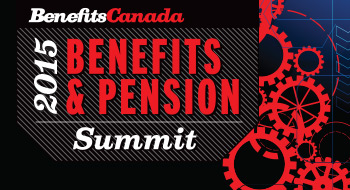
Investors have turned to bonds to provide income, liquidity, stability and diversification.
But all of these are being challenged in today’s low-rate environment, said Jim Cole, a vice-president with Philips, Hager & North Investment Management at Benefits Canada’s Benefits & Pension Summit in Toronto on Monday.
Read: Waiting to taper: Coping with low interest rates
He noted this period of low rates could last for a long time and some bonds, such as Canadian government bonds, are considered “high yield” because some countries’ sovereign debt (like Switzerland’s) have negative yields.
To get higher yields, he recommends a core-plus strategy. That allows fund managers to invest in fixed income products, such as global high-yield and emerging market debt in addition to investment-grade bonds.
Carlo DiLalla, vice-president, fixed income with CIBC Asset Management described two different types of core-plus strategies: bolt-on and holistic approaches.
Read: 3 tips to de-risk your portfolio
A bolt-on approach means a manager will make allocations to different global fixed income funds.
However, he noted the bond funds are managed against foreign benchmarks and may include high-risk and low-quality securities. This could mean there are unintended beta exposures in the Canadian portfolio.
Read: How can pension funds cope with a low interest rate environment?
A holistic approach means a manager will evaluate each individual global bond security is added to the Canadian portfolio and evaluated relative to the domestic security it replaces.
This approach, DiLalla explained, means managers can tactically avoid unintended beta otherwise dictated by indices.
All the articles from the event can be found in our special section: 2015 Benefits & Pension Summit Coverage.
